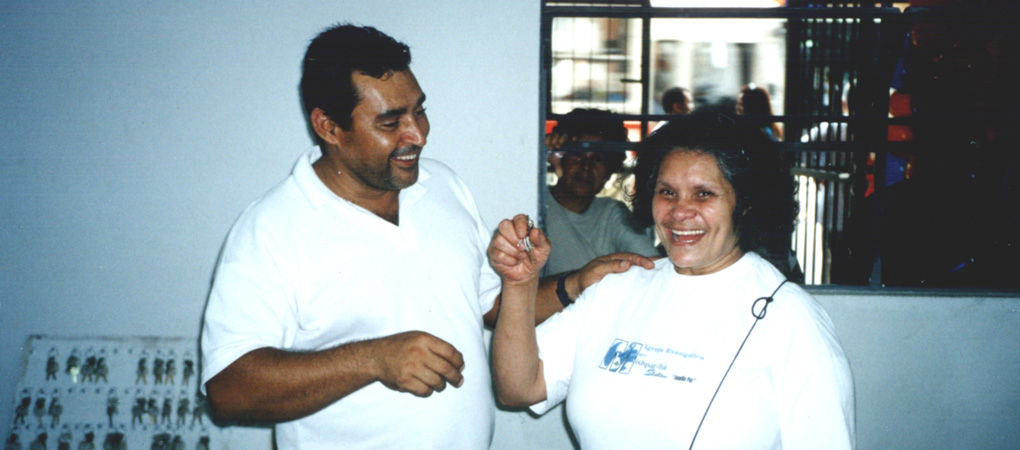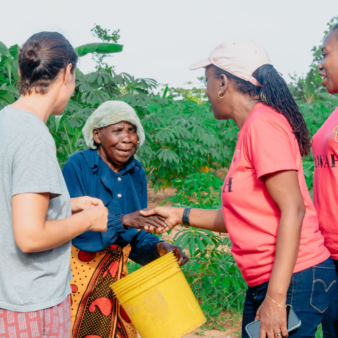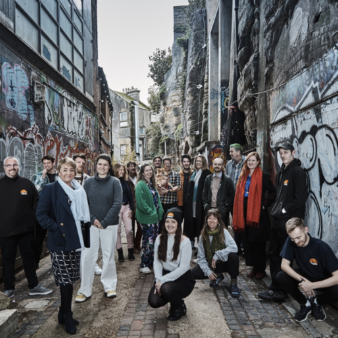This project has converted one of the many redundant and derelict commercial buildings in the centre of São Paulo for use as affordable housing for low-income households. Members of a popular housing movement (ULC) moved into the vacant and derelict former bank branch and with the support of a local NGO, has been converted into affordable apartments for 84 low-income families at a cost of $7,100 per apartment. This project works toward the reversal of the process of exodus from the city centre and is supported by the city government and the federal savings bank. Residents and members of the ULC were actively involved in decision taking, discussion, and participatory workshops throughout the phases of design, planning and ongoing management of the project. The residents lease the apartments from the bank for a period of 15 years, after which time they take full ownership of them.
Project Description
Aims and Objectives
The project aim is to:
- Recycle and convert derelict buildings in São Paulo’s city centre into housing for low-income groups, reversing a ten-year tendency of exodus from the area and making use of its urban infrastructure.
Despite reasonable advances in public policies for housing in the last two decades, Brazil’s current housing deficit is 5.6 million housing units, 63 per cent of which is accounted for by families with a monthly income below US$250.
After decades of intensive urbanisation, more than 80 per cent of the population currently lives in cities. In São Paulo, Brazil’s largest city, an estimated one fifth of the population of 17.5 million is currently living in inadequate housing conditions, in favelas (squatter settlements), cortiços (overcrowded tenement housing) or clandestine land subdivisions. In recent years government offices, businesses and financial institutions have left the city centre, leaving 30 per cent of buildings disused or under-utilised. The city centre of São Paulo is filled with empty buildings while, paradoxically, millions of people live in inadequate conditions elsewhere.
This Building Restoration for Social Housing Purposes project works toward the reversal of the process of exodus from the central area, proposing housing alternatives in city areas that have lost part of their population in the last several years yet remain rich in urban infrastructure.
In 1999, the ULC popular movement for housing (Unification of Tenement-Housing Struggles) occupied a derelict building, formerly a bank branch, in the centre of São Paulo. With assistance from Integra, feasibility studies were carried out, as well as negotiations with the owner and the public authorities, in order to negotiate the purchase of the property and enable the conversion of the empty building into apartments for 84 member families living in inadequate housing conditions.
The project, developed by the ULC in conjunction with Integra, was approved by the public authorities and received funding from the Caixa Econômica Federal (CEF), Brazil’s federal savings bank, through the PAR Housing Lease Programme. The $600,000 package covered the costs of purchasing the building, renovating and converting the space into residential units, architectural design and engineering, and social/community development work (provided by Integra). The project involved the creation of 84 dwelling units at an average cost of US$ 7,140 per unit. The costs of the project, funded by the CEF, are repaid by the residents in affordable monthly instalments, which do not exceed 0.7% of the total cost, over a period of fifteen years. Average monthly payments of US$50 are cheaper than the rents charged in cortiços (overcrowded tenement-style housing), which typically range from US$83 to US$100 per month. Residents are responsible for ongoing service and maintenance costs of approximately US$23.50 per month. At the end of the process, resident families lease the housing units from the bank for a period of 15 years, after which time they become owners of their apartments.
Housing units range from 26m² to 33m² and careful steps were taken to ensure that adequate natural ventilation and lighting was provided to each housing unit in the deep-plan, formerly air-conditioned and electrically lit building. Through an innovative process of participation and social support, residents took on the role of primary decision takers in the design, planning and on-going management of the project. Integra, selected by the ULC to take part in this project, carried out a series of activities with ULC members and future residents that included general weekly meetings, meetings with the elected co-ordination committee, work group activities and the creation of a space for discussion on themes ranging from project design and building codes to conflict resolution and community development. The objective was to promote the integration and active participation of future residents, to consolidate public spaces for talks and deliberations and to provide ongoing support without creating a relationship of dependence between the group of residents and the Technical Advisory team.
Why is it innovative?
- Recycling of derelict buildings in the city centre into affordable housing for social purposes, making use of existing buildings and urban infrastructure.
- Provision of housing for low-income sectors of the population (residents were either homeless or living in inadequate housing conditions) in central urban areas, close to the workplace.
- Articulation of Urban Popular Movements for housing with local public authorities, the CEF and the building owners.
- Innovative social approach, involving participatory workshops with future residents and extensive follow-up support
- This is the first project within a national housing programme to involve change of use (commercial to residential).
What is the environmental impact?
The project takes advantage of the existing urban infrastructure, and residents’ proximity to the workplace results in energy saving in terms of transportation. Water and energy are used in a rational and regularised way, in contrast to the semi-clandestine conditions in overcrowded cortiços. The revitalisation of city centre buildings has had a positive environmental impact on the city as a whole, providing an affordable housing alternative to people who might otherwise build irregular housing in environmentally-sensitive areas along the banks of rivers and next to water reservoirs, as is the case in other areas of the city. The initiative seeks to prevent city expansion to areas of environmental protection.
Is it financially sustainable?
Low-income households are given access to housing in central areas through a long-term leasing scheme in which funds can be repaid at a low interest rate over a period of fifteen years. The project has contributed toward the revitalisation of the surrounding area and increased its asset base. The central location of the project allows for savings on transportation costs and increased employment opportunities.
What is the social impact?
Integra’s innovative and participatory approach was a fundamental element in the development of the project. Extensive discussions, workshops and group activities were carried out with residents to promote community co-operation and integration. Victory after a long struggle for affordable housing in central areas has greatly empowered the ULC and other popular movements for housing. Extensive participatory work has strengthened social networks as well as relationships between community-based organisations, local government and federal funding agents. In all activities, both the ULC and Integra seek to reduce social inequalities and empower civil society groups.
Evaluation
The project has resulted in improved housing conditions and increased opportunities for an excluded segment of the population. The provision of adequate natural ventilation and lighting has resulted in improved health conditions, particularly among children. The project has greatly reduced the vulnerability of residents as it follows strict building codes.
Transfer
This is the first completed project within this process of urban regeneration in Brazil. Many similar projects, also funded by the CEF Federal Savings Bank through the PAR Housing Lease programme are currently underway in the city of São Paulo and in other Brazilian cities. There is potential for replication in other cities around the world where a similar exodus from central areas has occurred.
Partnership
NGO, public sector



